|
Introduction by Gianfranco Barbieri,
Direttore Responsabile of "Elettronica e Telecomunicazioni"
The technological innovation activities carried out by the RAI Research Centre have deep roots: in the past broadcasters were facing problems as challenging as those of today and needed the support of highly qualified technical personnel in the specific field of broadcasting. In fulfilling its tasks, the Centre was an actor of almost all the stages through which passed the technological evolution of broadcasting systems. The researchers of the Centre have systematically documented the undertaken projects and the achieved results, through a wide range of publications; among them, Elettronica e Telecomunicazioni, whose first issue appeared in 1952 has always provided a forum in which readers were regularly informed about the latest planned and adopted technological solutions. EThe editors frequently receive requests for consultation of material published over the years. The aim of the initiative is to collect LeMiniSerie articles previously appeared in the numbers of Electronics and Telecommunications treat and investigate a single theme, with a common look, adding, when necessary, corrections and updates. Each collection of articles is available in the web site of the Centro Ricerche e Innovazione Tecnologica in two versions: a downloadable and printable version (Adobe Acrobat PDF) and a flippable version (Adobe Flash swf). |
| pdf |
sfw |
|
|
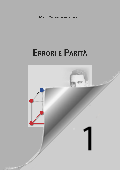 |
Errors and Parity
In 1948, Claude E. Shannon published an article intended to revolutionize the technology behind digital telecommunications. In that article he sets out what is known as the Shannon limit, providing a relationship between the maximum capacity in terms of bit-rate, and the bandwidth of a noisy channel and indicates that this capacity can be achieved through the use of codes for error correction. The evolution of techniques of protection against errors, since the code of Hamming codes to LDPC (Low Density Parity Check), has led in recent years to reach the Shannon limit. This collection of three articles discusses the role of codes in the space telecommunications, storage systems and communications systems, for telephony and digital television. The second generation of standards for the broadcating and distribution of television signals and, more recently, new data storage systems, adopt a format based on LDPC.
|
|
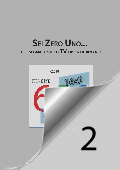 |
Six Zero One ... and video TV signal transforms into bits
The development of systems for encoding digital video information originates with the international agreement in 1982 to converge on a single digital TV format: the present Recommendation ITU-R BT.601. The selection criteria for the parameters adopted for the coding of standard-definition television signals have not only influenced the subsequent development of systems for production and broadcasting, including those based on the MPEG compression standard, but are also the basis of developments in high definition.
|
|
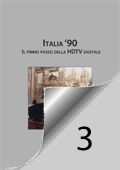 |
Italia ‘90 - The First Step of Digital HDTV
part I
In 1990, for the first time, a digital HDTV signal is broadcast by satellite. It is the first game of the Soccer World Cup Italy '90.
This event is possible thanks to the results of the European project Eureka 256 proposed and implemented by a Spanish-Italian consortium including Rai and Telettra, as Italian component, and Telettra Española, Retevision and the Polytechnic University of Madrid, as Spanish component.
This first part focuses on 10 years of activity. Begins in 1986 with the presentation of the first documents on the design of a system for transmitting the video signal using compression techniques based on DCT and VLC codes. Then the 20 articles collected in the second part are briefly summarized. This first part identifies the factors that have influenced the subsequent development of digital video coding techniques
|
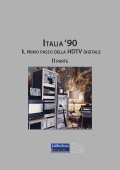 |
N.A. |
Italia ‘90 - The First Step of Digital HDTV
part II
Nel 1990, for the first time, a digital HDTV signal was broadcast by satellite. It was the first game of the Soccer World Cup Italy '90.
The event is remembered in the third collection of LeMiniSerie. To facilitate the consultation, the publication is divided into two parts, the second part contains the 20 articles published by Elettronica e Telecomunicazioni about the project from 1988 until 1993. |
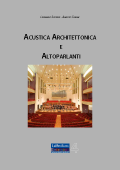 |
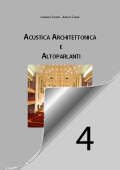 |
Architectural Acoustics and speakers
The acoustics is essential for the design of an environment suitable for a particular kind of listening, for example, to concerts or conferences. The three chapters on this issue are devoted respectively to the theoretical and physical aspects of acoustics, the design parameters and choice of materials to the interior of the rooms.
The fourth chapter is devoted to public address systems and will provide the basics for choosing the most suitable type of spread to the context in which it is and wants to work. The end result often depends on the choice of speakers and their placement. |
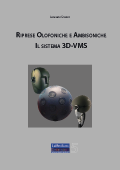 |
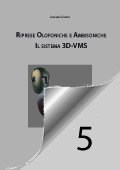 |
Holophonic and Ambisonic Shooting - The 3D-VMS
Since 2007 the Rai - Research Centre has evaluated and tested new sound recording systems, having as objective the optimization of production costs, a simplification of the technical problems and an interface with the existing infrastructure of audio production.The first three chapters are devoted to experimentation with a microphone based holophonic theory. The next three chapters are dedicated to the 3D-VMS, based on the Ambisonic theory. This system, developed and patented by the Rai - Research Centre and the AIDA, allows recording using a single probe microphone channel with 32 capsules and the synthesis of a set of virtual microphones. Through the use of a joystick, you can easily define both the polar pattern, both pointing of each of the seven synthesized virtual microphones. |
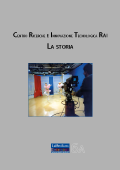 |
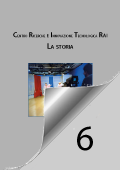 |
Centre for Research and Technological Innovation
The History
The collection consists of two parts that include six papers published, from 1961, to provide an overview of the research and experimentation developed in RAI and in particular at the Research Center Rai. This first part includes two papers published in 2009, on the occasion of the 80 years since the first experiments in television in Italy. |
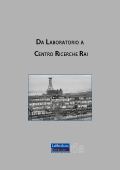 |
N.A. |
From the Laboratory to the Research Centre
In this second part of the collection dedicated to the history of the Centre for Research and Technological Innovation of Rai we reproduce two pages of description of the Laboratory in 1961. The eight following pages reproduce the brochure made in October 1963 on the occasion of the "International Fair of maritime communications and telecommunications" in Genoa. Then the article published in the January-March 1965 on "Electronics" entitled "The Research Laboratory of Rai". Finally the article published in the November-December 1976 "Electronics and Telecommunications" and entitled "The Research Centre of RAI". |
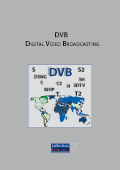 |
N.A. |
DVB: Digital Video Broadcasting
The DVB consortium, established in 1993, currently has more than 200 participants from more than 35 countries and aims to set the standards for data and television services. Services based on DVB are present on all continents and nearly 900 million terminals in use.
The number of articles published by Electronics and Telecommunications testify the commitment of Rai and, in particular, of the Research Centre participation in the activities of the DVB. The articles were divided into three collections of LeMiniSerie.
This collection includes 9 articles, from 1994 to 2011, dedicated to broadcasting via satellite (DVB-S and S2), the platform for services and home terminals (DVB-MHP), the effects of the introduction of fourth generation cell phone systems (LTE) on antenna installations for television distribution. |
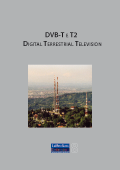 |
N.A. |
DVB-T and T2: Digital Terrestrial Television
DVB-T is the digital terrestrial television broadcasting system more widely adopted in the world, in 60 countries with more than 200 million receivers installed. On 4 July 2012 ended the way, lasted four years, which has led Italy to move from analogue to digital terrestrial.
The introduction of the second generation standard DVB-T2 will open up new possibilities, given that the same transmission band can be used to launch an wider HDTV offer, overcoming the limits set by the current standard.
This collection includes 16 articles published from December 1999 to April 2012. |
 |
N.A. |
H and DVB-SH Mobile TV
DVB-H was the first DVB protocol specifically designed for television broadcasting for mobile terminals. The DVB-SH is a complete solution, a hybrid technique of transmission, satellite and terrestrial broadcasting addressed for mobile TV.
The Research Centre Rai follows and promotes the development of standards that enable mobile TV, and create prototype services for DVB-H and DVB-SH.
This collection includes seven articles published from December 2005 to August 2009. |